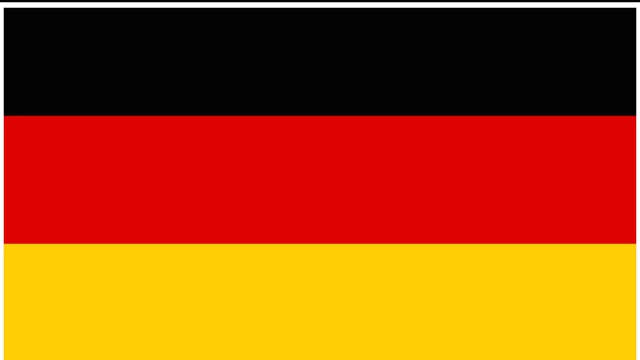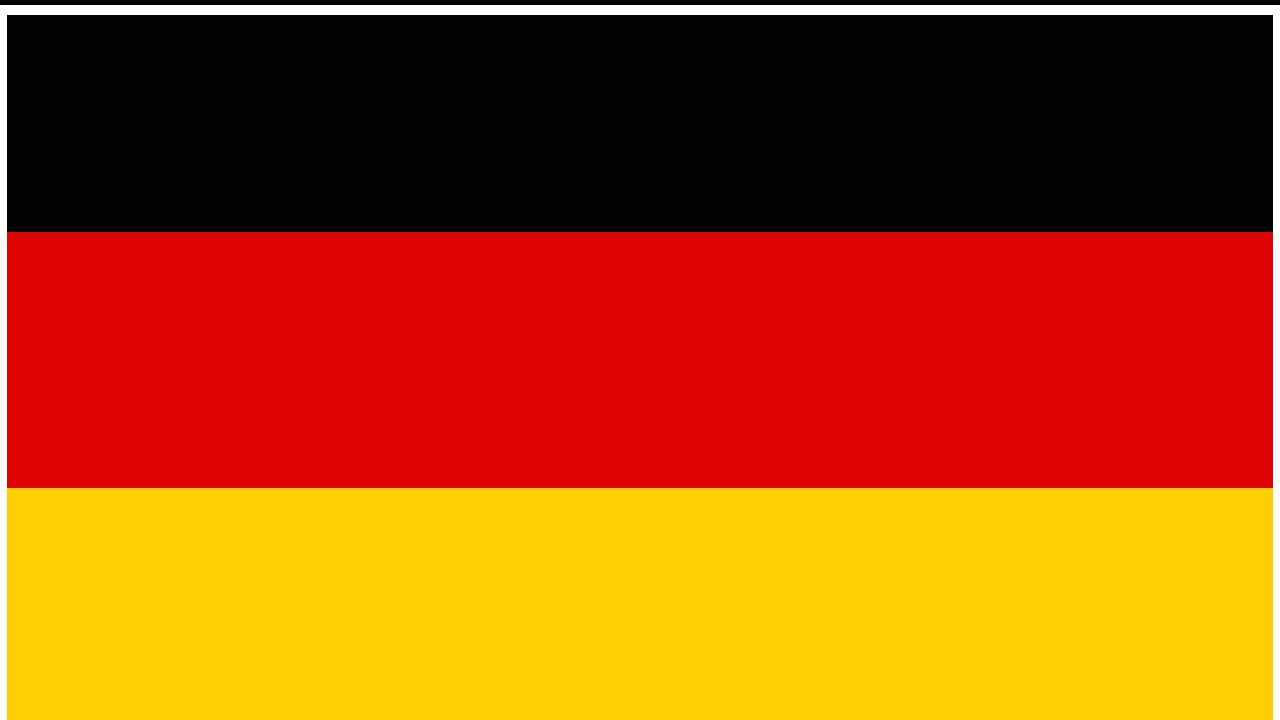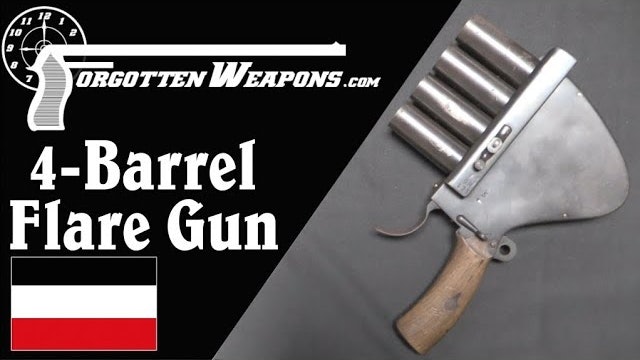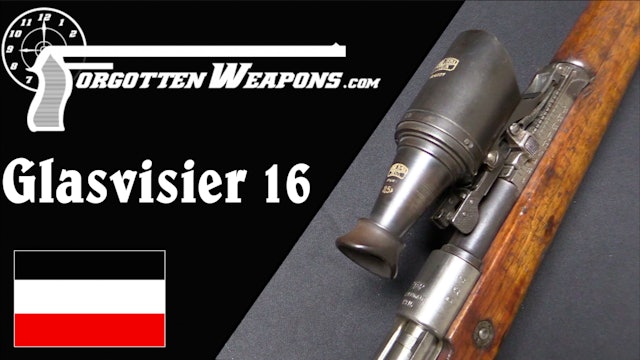-
Prototype Gustloff MKb-42(G) aka Model 206
This is a reposting of a video from September 2016 with a new introduction. The recent publication of the new and expanded edition of Hans-Dieter Handrich's book "Sturmgewehr!" has revealed new information about the history of this rifle which I wanted to put into the video.
German arms develo...
-
A Unique Pre-WWI Custom Combination Gun
This unique custom sporting rifle (and shotgun) is a very cool example of the true gunsmith's art. This firearm began as a Mauser model 98 action, which was embellished and fitted with a fancy barrel (chambered for 8mm) and express sights. The gunsmith, Georg Knaak, of Berlin then added a shotgun...
-
Gebrüder Rempt Four-Barrel Enormous Flare Pistol
In 1917, the German military issued a contract for the construction of 2500 of these unique and impressive 4-barreled flare launchers. They were manufactured by 7 different companies (this example being from Gebrüder Rempt), and were intended for the illumination of airfields. To this end, they d...
-
MG-17 German Aircraft Machine Gun
The MG-17 is a belt-fed 8mm machine gun that was used on a large number of Luftwaffe aircraft early in World War II. The gun was developed by Rheinmetall through its subsidiary in Solothurn, Switzerland (as a way to evade the Versailles Treaty restrictions on arms development). The basic action i...
-
Schmeisser's MP-18,I - The First True Submachine Gun
When Germany began looking in late 1915 for a new weapon ideally suited for the “last 200 meters” of a combat advance, Hugo Schmeisser’s blowback submachine gun would prove to be the weapon that would set the standard for virtually all submachine guns to come. It was a fully automatic only weapon...
-
Bergmann's MP35 Submachine Gun: It Feeds From the Wrong Side
The MP35 submachine gun was designed by Theodore Emil Bergmann, the son of the Theodore Bergmann who had manufactured the turn of the century line of Bergmann pistols. Unlike his father, Emil was a firearms designer, and not just a manufacturer. This design was submitted for German military testi...
-
The Schmeisser MP41: A Hybrid Submachine Gun
Most people think that the MP41 is simply an MP40 in a wooden stock, but this is actually not the case - and unlike the MP40, the MP41 can be accurately called a Schmeisser - because it was Hugo Schmeisser who designed it.
The MP41 is actually a combination of the upper assembly of an MP40 wi...
-
The German WWII Standby: The MP38 and MP40 SMGs
The MP40 is an iconic piece of World War 2 weaponry, and it's about time we took a closer look at its development...
Thanks to the Institute of Military Technology for allowing me to have access to these three examples so I can bring them to you! Check out the IMT at:
http://www.instmiltech...
-
The WW2 Double-Magazine MP40/I
The MP40/I was an experimental modification of the MP-40 submachine gun developed by the Erma company (we think) in late 1942. It was presumably developed in response to complaints of Soviet fire superiority with SMGs because of their large drum magazines (and also the larger number of SMGs used ...
-
The .32ACP Dreyse Light Carbine
Manufactured by Rheinmetall and designed by Louis Stange, this light .32ACP (7.65mm Browning) carbine is a bit of a mysterious item. Very little written information exists about it, but we know it was sold on the commercial market as it appears in several firearms sale catalogs and it is, frankly...
-
A Well-Traveled Luger
This Luger has seen basically all of 20th century German history. It began as a 1917 production DWM pistol, used in World War One. After the war, it was one of the guns remarks for use by the police and military of the Weimar Republic, and at some point in this period had a special police safety ...
-
H&K VP-70M: Polymer Framed Cutting Edge Machine Pistol from 1973
The VP-70 was designed by Heckler & Koch cofounder Alex Seidel, and introduced in 1973. It was made with the idea of being a gun easily mass produced for arming a civilian resistance in case of Russian invasion of East Germany, but the West German government opted not to adopt it. In the original...
-
Walther's .45ACP MP (P38 Precursor)
During the process of developing the pistol which would become the German army's P38, the Walther company was also interested in potential export contracts (like the one they actually did get from Sweden). One potential contract briefly explored was to the United States, and a few prototype MP pi...
-
Walther Olympia: Germany's Interwar Target Pistol
The Colt Woodsman, introduced in 1915, was the premier - and really the only serious - option for the competitive target shooter into the 1920s when the Walther company decided to introduce a competitor. Walther needed a product to bring business, of course, and the Versailles treaty prohibited i...
-
Wehrmannsgewehr - German Shooting Competition After WW1
Introduced by a Dutchman in 1897, the Wehrmannsgewehr was a type of 3-position shooting competition using military pattern rifles in a sporting caliber (the 8x46R, firing roughly a 150 grain lead bullet at 1800 fps). It was pretty limited in popularity in Germany until the end of World War One, w...
-
Germany's WW1 Zeiss Bifocal Scope: the Glasvisier 16
The Zeiss 2.5x Glasvizier 16 optic is one of the most unusual and interesting of the German sighting systems used on rifles during the First World War. It is a bifocal optic, working in the same way as today’s SeeAll optic. Basically, a section of magnifying lens sits in the bottom third of the f...
-
Kaiserliche Schutztruppen G98 - for the German Camel Corps
Germany established their colony of German South West Africa (Deutsch-Südwestafrika, now Namibia) in 1884, as part of its late attempt to become a colonial power to rival the United Kingdom. The soldiers deployed to protect German interests t here were the Kaiserliche Schutztruppen, and they were...
-
Gewehr 71/84: Germany's Transitional Repeating Rifle
In the ongoing arms race between France and Germany, the Mauser 71/84 was the first German repeating rifle. Paul Mauser began work on it in the late 1870s, patented the design in 1881, and it was adopted formally in 1884. Production began in 1885, with a total of 1,161,148 rifles being delivered ...
-
Germany's First Smokeless Carbines: the Kar 88 and Gewehr 91
With the development of the smokeless Gewehr 88 “Commission Rifle”, the German Army finally made a serious effort to bring their cavalry units up to a modern standard. There had never been a carbine variant of the Mauser 71/84 produced, and even by the late 1880s many German cavalrymen were still...
-
Karabiner-S: The East German Unicorn SKS
One of the rarest patterns of the SKS is the East German type - the Karabiner-S. Total production quantity is not known, but their survival rate is quite low and most of the examples in the US are Vietnam War bring backs. At any rate, the Karabiner-S is not quite an exact copy of the standard SKS...
-
Kleiner Waffenwerkzeugsatz - A German Armorer's Tool Kit
This is a “Kleiner Waffenwerkzeugsatz” - a small armorer’s tool kit used by a German Waffenmeister. It is a really neat little set of handy and essential tools for working on small arms, which folds up and fits neatly into a standard German WWII ammunition can. The use of standard ammo cans for s...
-
The MG-15: A Flexible Aircraft Machine Gun Pushed into Infantry Service
The MG-15 was the first standard flexible-mounted aircraft machine gun adopted by the Luftwaffe in the 1930s. Both it and the MG-17 are evolved from a Rheinmetall/Solothurn design which would also become the Austrian and Hungarian M30 infantry light machine guns. As used by the Luftwaffe, the MG1...
-
MG-34: The Universal Machine Gun Concept
The MG34 was the first German implementation of the universal machine gun concept - and really the first such fielded by any army. The idea was to have a single weapon which could be used as a light machine gun, heavy machine gun, vehicle gun, fortification gun, and antiaircraft gun. The MG34 was...
-
Evolution of the Sturmgewehr: MP43/1, MP43, MP44, and StG44
Today we are going to look at the evolution of the Sturmgewehr - from the MP43/I and MP43 to the MP44 and StG44, what actually changed and why?

























